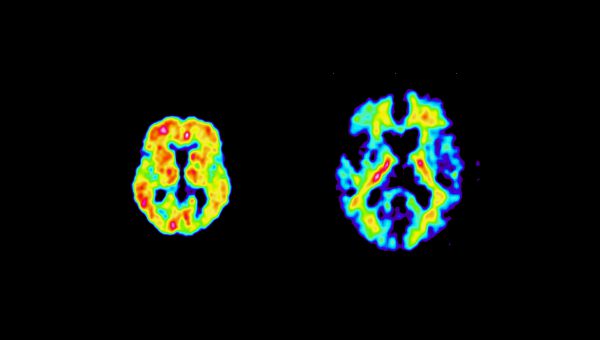The AβCC Peptide™ Technology
Alzinova’s products have been developed using the proprietary AβCC Peptide™ Technology. The technology entails covalent restriction of the amyloid-β (Aβ) peptide so that it only forms the soluble Aβ toxins (oligomers/protofibrils) that play a central role in the disease process.
The elusive oligomer target
It has been known for many years that Aβ42 oligomers are particularly neurotoxic when compared to monomeric and fibrillar forms of the peptide, and their presence in disease brains correlates better with disease severity than what the plaque load does. These oligomers are therefore very attractive targets for future immunotherapies, particularly as there have been no truly oligomer-targeting therapies previously evaluated in humans.
Development of novel oligomer-directed immunotherapies is therefore warranted, but extremely difficult in practice.
Although oligomers are structurally distinct from monomers and fibrils, many structural features are still found in all forms of the peptide and immunotherapies therefore have a tendency to target all types. Selecting antibodies and vaccines capable of only targeting oligomers is fraught with technical difficulties, as the oligomeric forms of Aβ are notoriously elusive because Aβ is in a continuous equilibrium with different soluble and insoluble aggregated states.
The result is a heterogeneous mix of different forms of the peptide that continuously shifts towards the end state: the inert insoluble fibrils. This poses serious problems when oligomers are to be used as analytes in research. Importantly, it precludes all uses of Aβ oligomers as components of therapeutic vaccines.
The AβCC peptide in hairpin conformation. Picture courtesy of Prof. T. Härd, SLU, Sweden.
Stabilisation of oligomers
The AβCC Peptide™ Technology solves the problem of metastability and heterogeneity by conformational restriction of the oligomers. A strategically placed covalent bond (a disulfide bond) specifically stabilises oligomer structures by preventing the conformational switch required for fibril formation. In consequence, Aβ42CC accumulates as stable homogeneous oligomers with antiparallel β-sheet tertiary structure. Such a structure is known to be a unique feature that separates oligomers from fibrils which contain parallel β-sheet tertiary structure.
The AβCC oligomers are thus non-fibrillogenic Aβ oligomer mimics ideally suited for oligomer drug development.
Aβ42 peptide aggregation. Oligomers are structurally distinct from non-aggregated peptide and insoluble fibrillar aggregates, but targeting only this form and not the others is technically challenging. The panels are transmission electron microscopy images.
Oligomer-specific immunotherapy
The stabilised AβCC oligomers have the unique property of stimulating the immune system to produce antibodies capable of discriminating between fibrils, monomers, and oligomers. With this technology, Alzinova is thus in a unique position to be able to isolate large amounts of synthetic mimetic Aβ42 oligomers which are used as antigens in the development of immunotherapy.
By stimulating the body to produce its own antibodies, ALZ-101 is a cost-effective and long-acting treatment for which a high patient adherence and a large potential patient population is expected.
Learn more
Learn more about how the proprietary AβCC Peptide™ Technology lies at the heart of our programs and our mission to bring true oligomer-targeting therapies into clinical development.



